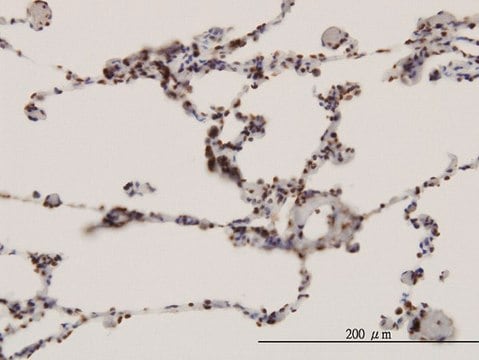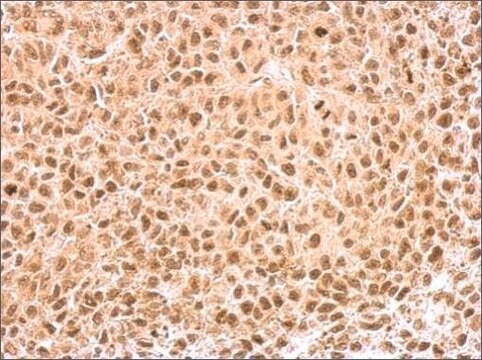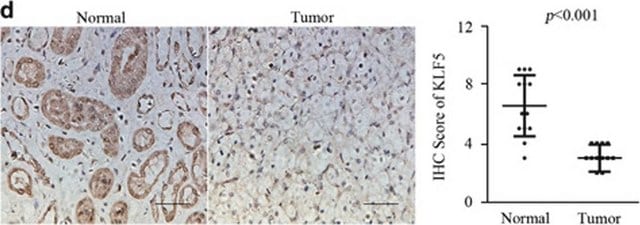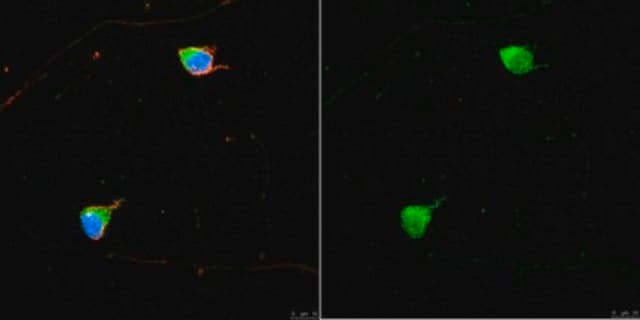SAB4200338
Anti-KLF5 antibody , Mouse monoclonal
clone KLF5-55, purified from hybridoma cell culture
Sinônimo(s):
Monoclonal Anti-BTEB2, Monoclonal Anti-CKLF, Monoclonal Anti-IKLF, Monoclonal Anti-KLF5, Monoclonal Anti-Kruppel-like factor 5 (intestinal)
About This Item
Produtos recomendados
fonte biológica
mouse
conjugado
unconjugated
forma do anticorpo
purified from hybridoma cell culture
tipo de produto de anticorpo
primary antibodies
clone
KLF5-55, monoclonal
forma
buffered aqueous solution
peso molecular
antigen ~55
reatividade de espécies
rat, mouse, chicken, human, hamster, canine, monkey
concentração
~1.0 mg/mL
técnica(s)
indirect immunofluorescence: 2.5-5.0 μg/mL using methanol/acetone fixed PC3 cells.
western blot: 1.0-2.0 μg/mL using extracts of PC3 cells.
Isotipo
IgG1
nº de adesão UniProt
Condições de expedição
dry ice
temperatura de armazenamento
−20°C
modificação pós-traducional do alvo
unmodified
Informações sobre genes
human ... KLF5(688)
mouse ... Klf5(12224)
rat ... Klf5(84410)
Descrição geral
Especificidade
Imunogênio
Aplicação
Ações bioquímicas/fisiológicas
forma física
Armazenamento e estabilidade
Exoneração de responsabilidade
Not finding the right product?
Try our Ferramenta de seleção de produtos.
recomendado
Código de classe de armazenamento
10 - Combustible liquids
Ponto de fulgor (°F)
Not applicable
Ponto de fulgor (°C)
Not applicable
Certificados de análise (COA)
Busque Certificados de análise (COA) digitando o Número do Lote do produto. Os números de lote e remessa podem ser encontrados no rótulo de um produto após a palavra “Lot” ou “Batch”.
Já possui este produto?
Encontre a documentação dos produtos que você adquiriu recentemente na biblioteca de documentos.
Nossa equipe de cientistas tem experiência em todas as áreas de pesquisa, incluindo Life Sciences, ciência de materiais, síntese química, cromatografia, química analítica e muitas outras.
Entre em contato com a assistência técnica








